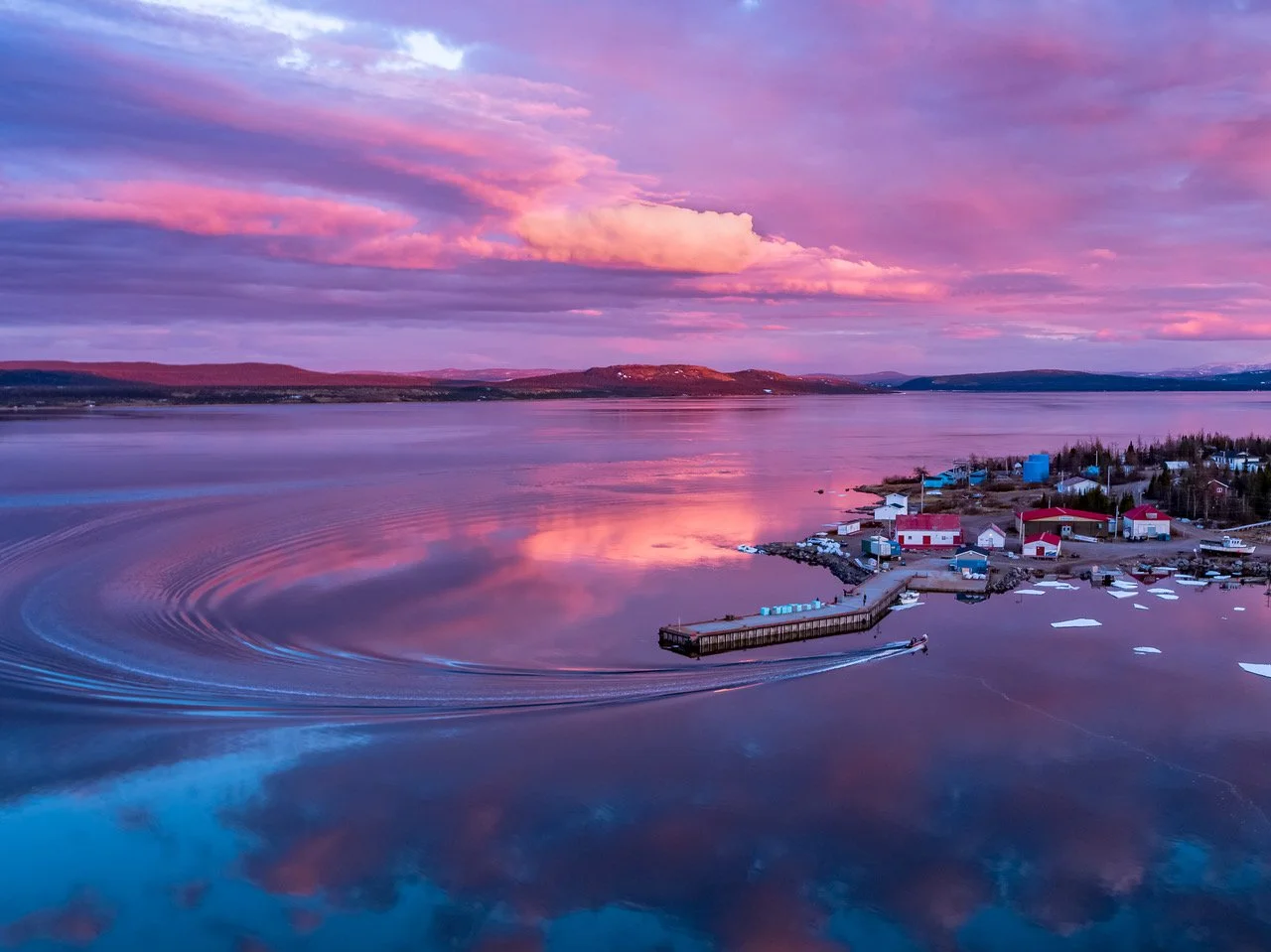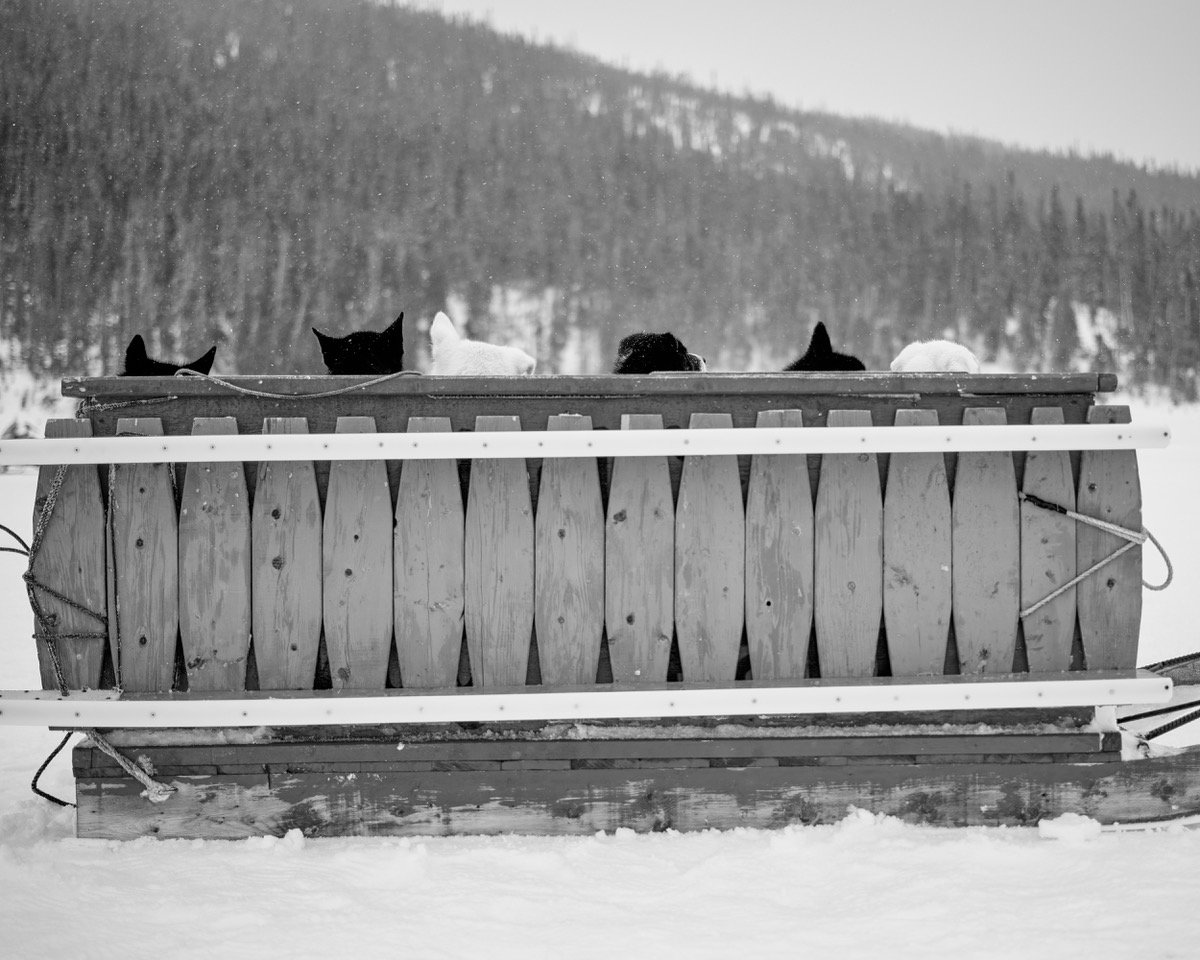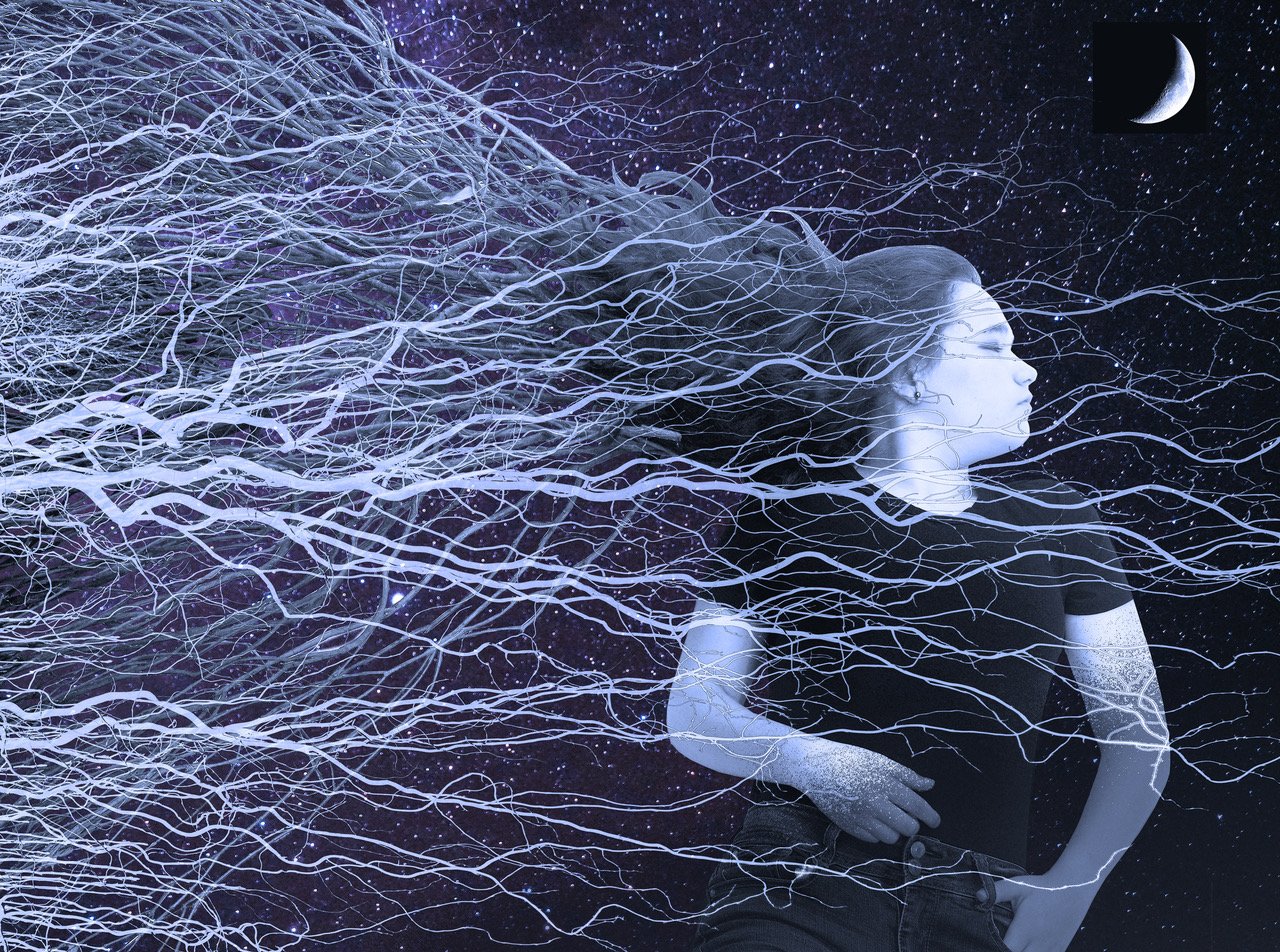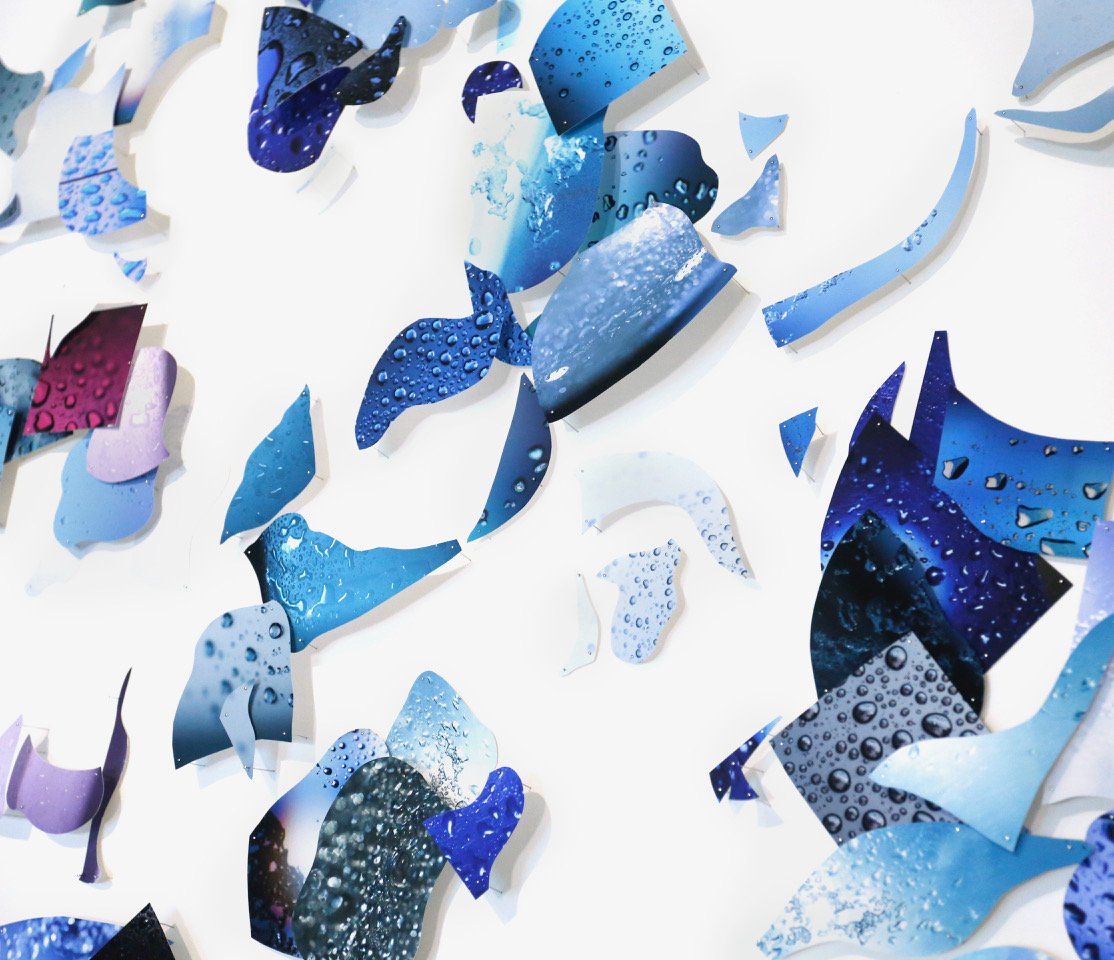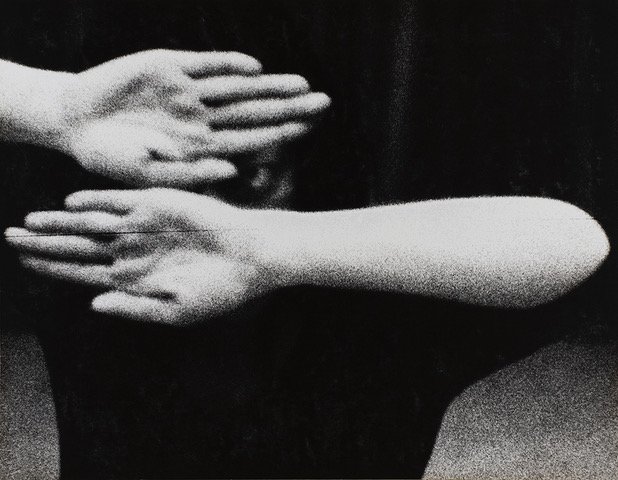
Christina Leslie. Pinhole Portraits and Places | Stephen Bulger Gallery | Toronto
Stephen Bulger Gallery | Toronto
10. Mai – 5. Juli 2025
Christina Leslie. Pinhole Portraits and Places
Dumbo, 2023 © Christina Leslie / courtesy Stephen Bulger Gallery
Die Stephen Bulger Gallery freut sich, „Pinhole Portraits and Places“ zu präsentieren, die erste Einzelausstellung von Christina Leslie (kanadisch-jamaikanisch, geb. 1983). „Pinhole Portraits and Places“ vereint mehrere Werkgruppen, darunter ‚Pinhole Remix‘ (2017–2020), ‚Pinhole Places‘ (2022–2025) und ‚Pinhole Parishes‘ (2023–2025). „Pinhole Portraits and Places“ erweitert Leslies wiederkehrende Themen Dekolonisierung, Identität, Migration, Marginalisierung und Kulturerbe und kombiniert dabei historische fotografische Techniken mit zeitgenössischen Methoden.
Als Reaktion auf die ständigen und rasanten Fortschritte in der digitalen Fotografie begann Leslie 2016, sich mit historischen fotografischen Techniken zu beschäftigen. Ihr Wunsch, über die Wurzeln der analogen Fotografie nachzudenken und sich wieder mit ihnen auseinanderzusetzen, führte zu einer Reihe von Arbeiten, die frühe fotografische Praktiken, insbesondere die Lochkamera, in den Vordergrund stellten. Nach umfangreichen Experimenten und mehreren erfolglosen Versuchen gelang es ihr Anfang 2017, ihre DSLR in eine funktionsfähige Lochkamera umzubauen.
Pinhole Remix, die erste Serie, die mit ihrer umgebauten Kamera entstand, entstand, nachdem ihr die eklatante Abwesenheit schwarzer Menschen in der historischen europäischen Kunst aufgefallen war, wo Darstellungen oft eine koloniale, von Weißen dominierte Perspektive widerspiegelten. Ihre Lochkamera-Porträts von Mitgliedern der schwarzen Community hinterfragen diese Ausgrenzung und geben der frühen Kunstgeschichte und Fotografie einen neuen Rahmen. Durch lange Belichtungszeiten erinnern ihre Arbeiten an die Pracht von Auftragsgemälden. Die daraus resultierenden Bilder mit ihren satten Farben und ihrer warmen Beleuchtung sind von Techniken der Renaissance und Rembrandts Stil inspiriert. Durch die Übernahme von Praktiken, die traditionell der Darstellung von Adel und Hierarchien vorbehalten waren, regt Pinhole Remix Diskussionen über Rasse, Repräsentation und die in der Kunstgeschichte verankerten Narrative an.
Die Bildsprache von Pinhole Places entstand aus Leslies Wunsch, die Spontaneität der Straßenfotografie mit dem Fokus auf das Medium Fotografie selbst zu verbinden. Inspiriert von Uta Barth, deren ätherische Arbeiten sich mit Wahrnehmung, Licht und dem Akt des Sehens auseinandersetzen, fängt Leslie Räume auf eindrucksvolle und unkonventionelle Weise ein. Mit provisorischen Lochblenden, die sie aus vor Ort gefundenen Materialien bastelte, fotografierte sie eine Vielzahl von Orten – sowohl ikonische als auch unbekannte –, die den Betrachter dazu einladen, über ihr eigenes Gefühl der Vertrautheit, Erinnerung und Wahrnehmung von Orten nachzudenken.
Pinhole Parishes konzentriert sich auf mehrere Gemeinden in Jamaika, inspiriert von Leslies Familiengeschichten vor der Einwanderung nach Kanada. Sie erinnert sich mit tiefer Zuneigung an die Geschichten ihrer Verwandten aus den späten 1960er und frühen 1970er Jahren – einer Zeit, die geprägt war vom Optimismus nach der Unabhängigkeit Jamaikas, dem Aufkommen von Reggae und Ska sowie rasanten technologischen und kulturellen Veränderungen. Damals hatten nur sehr wenige Menschen Zugang zur Fotografie; nur wenige besaßen eine Kamera, und zum Entwickeln der Filme musste man oft nach Kingston fahren. Daher sind ihre Erinnerungen vor allem durch mündliche Überlieferungen erhalten geblieben, wodurch eine ergreifende Mischung aus Präsenz und Abwesenheit entsteht. Um die Kluft zwischen dieser Zeit und ihrer eigenen Erfahrung zu überbrücken, entwickelte Leslie eine Lochkamera, mit der sie Fotos schuf, die die Ästhetik der Gegend widerspiegeln (sie baute eine Lochblende aus einem Teebeutel, Klebeband und Gaze), und griff dabei auf Orte aus ihren eigenen Erfahrungen zurück, die sie bei ihren Besuchen in Jamaika und im Kontakt mit den Menschen dort gemacht hatte.
Galang, 2025 © Christina Leslie / courtesy Stephen Bulger Gallery
La Stephen Bulger Gallery a le plaisir de présenter Pinhole Portraits and Places, notre première exposition solo consacrée à Christina Leslie (Canadienne d'origine jamaïcaine, née en 1983). Pinhole Portraits and Places rassemble plusieurs séries d'œuvres réalisées à partir de Pinhole Remix (2017-2020), Pinhole Places (2022-2025) et Pinhole Parishes (2023-2025). Pinhole Portraits and Places développe les thèmes récurrents de Leslie, à savoir la décolonisation, l'identité, la migration, la marginalisation et le patrimoine, tout en combinant des techniques photographiques historiques et des méthodologies contemporaines.
En réponse aux progrès constants et rapides de la photographie numérique, Leslie a commencé à explorer les techniques photographiques historiques en 2016. Son désir de réfléchir et de renouer avec les racines de la photographie analogique a donné naissance à un ensemble d'œuvres qui mettent en valeur les premières pratiques photographiques, en particulier l'appareil photo à sténopé. Après de nombreuses expérimentations et plusieurs tentatives infructueuses, elle a réussi à transformer son appareil photo reflex numérique en un appareil photo à sténopé fonctionnel au début de l'année 2017.
Pinhole Remix, la première série réalisée avec son appareil photo adapté, a vu le jour après avoir remarqué l'absence flagrante de représentation des Noirs dans l'art européen historique, où les représentations reflétaient souvent une perspective coloniale et dominée par les Blancs. Ses portraits à sténopé de membres de la communauté noire remettent en question cette exclusion et redéfinissent l'histoire de l'art et de la photographie. Grâce à de longues expositions, son travail évoque la grandeur des peintures de commande. Les images qui en résultent, avec leurs couleurs riches et leur éclairage chaleureux, s'inspirent des techniques de la Renaissance et du style de Rembrandt. En adoptant des pratiques traditionnellement réservées à la représentation de la noblesse et de la hiérarchie, Pinhole Remix suscite des conversations sur la race, la représentation et les récits ancrés dans l'histoire de l'art.
Le langage visuel de Pinhole Places est né du désir de Leslie de relier la spontanéité de la photographie de rue et de se concentrer sur le médium photographique lui-même. Inspirée par Uta Barth, dont le travail éthéré explore la perception, la lumière et l'acte de voir, Leslie capture les espaces d'une manière évocatrice et non conventionnelle. À l'aide d'objectifs à sténopé improvisés fabriqués à partir de matériaux trouvés sur place, elle a photographié divers endroits, tantôt emblématiques, tantôt obscurs, invitant les spectateurs à réfléchir à leur propre sentiment de familiarité, à leurs souvenirs et à leur perception des lieux.
Pinhole Parishes se concentre sur plusieurs paroisses de la Jamaïque, inspirées par les histoires familiales de Leslie avant son immigration au Canada. Elle se souvient avec beaucoup d'émotion des histoires de ses proches à la fin des années 1960 et au début des années 1970, une période marquée par l'optimisme qui a suivi l'indépendance de la Jamaïque, l'essor du reggae et du ska, ainsi que par des changements technologiques et culturels en plein essor. À l'époque, très peu de gens avaient accès à la photographie ; rares étaient ceux qui possédaient un appareil photo et il fallait souvent se rendre à Kingston pour développer les pellicules. Par conséquent, leurs souvenirs sont principalement préservés grâce à la transmission orale, créant un mélange poignant de présence et d'absence. Afin de combler le fossé entre le temps et sa propre expérience, Leslie a conçu un appareil photo à sténopé pour créer des photographies qui font écho à l'esthétique de la région (en fabriquant un objectif à sténopé à partir d'un sachet de thé, de ruban adhésif et de gaze), tout en s'inspirant de lieux qu'elle a visités lors de ses voyages en Jamaïque et de ses rencontres avec ses habitants.
Pinhole #4, 2023 © Christina Leslie / courtesy Stephen Bulger Gallery
La Stephen Bulger Gallery è lieta di presentare Pinhole Portraits and Places, la prima mostra personale di Christina Leslie (canadese-giamaicana, nata nel 1983). Pinhole Portraits and Places riunisce diverse opere realizzate tra cui Pinhole Remix (2017-2020), Pinhole Places (2022-2025) e Pinhole Parishes (2023-2025). Pinhole Portraits and Places amplia i temi ricorrenti nell'opera di Leslie, quali la decolonizzazione, l'identità, la migrazione, l'emarginazione e il patrimonio culturale, combinando tecniche fotografiche storiche e metodologie contemporanee.
In risposta ai costanti e rapidi progressi della fotografia digitale, Leslie ha iniziato a esplorare le tecniche fotografiche storiche nel 2016. Il suo desiderio di riflettere e riavvicinarsi alle radici della fotografia analogica ha dato vita a una serie di lavori che mettono in risalto le prime pratiche fotografiche, in particolare la fotocamera stenopeica. Dopo lunghi esperimenti e diversi tentativi falliti, all'inizio del 2017 è riuscita a trasformare la sua reflex digitale in una fotocamera stenopeica funzionante.
Pinhole Remix, la prima serie realizzata con la sua fotocamera adattata, è nata dopo aver notato la palese assenza della rappresentazione dei neri nell'arte storica europea, dove le raffigurazioni riflettevano spesso una prospettiva coloniale e dominata dai bianchi. I suoi ritratti stenopeici dei membri della comunità nera sfidano questa esclusione e ridefiniscono la storia dell'arte e della fotografia delle origini. Utilizzando lunghe esposizioni, il suo lavoro evoca la grandiosità dei dipinti su commissione. Le immagini risultanti, con i loro colori ricchi e l'illuminazione calda, traggono ispirazione dalle tecniche rinascimentali e dallo stile di Rembrandt. Adottando pratiche tradizionalmente riservate alla rappresentazione della nobiltà e della gerarchia, Pinhole Remix stimola il dibattito sulla razza, la rappresentazione e le narrazioni insite nella storia dell'arte.
Il linguaggio visivo di Pinhole Places nasce dal desiderio di Leslie di collegare la spontaneità della fotografia di strada e concentrarsi sul mezzo fotografico stesso. Ispirata da Uta Barth, il cui lavoro etereo esplora la percezione, la luce e l'atto del vedere, Leslie cattura gli spazi in modo evocativo e non convenzionale. Utilizzando lenti stenopeiche improvvisate realizzate con materiali trovati in ogni luogo, ha fotografato una varietà di luoghi, sia iconici che sconosciuti, invitando gli spettatori a riflettere sul proprio senso di familiarità, memoria e percezione del luogo.
Pinhole Parishes si concentra su diverse parrocchie della Giamaica, ispirandosi alle storie della famiglia di Leslie prima dell'immigrazione in Canada. Le storie dei suoi parenti della fine degli anni '60 e dei primi anni '70 sono state ricordate con profondo affetto: un periodo segnato dall'ottimismo post-indipendenza della Giamaica, dall'ascesa del reggae e dello ska, insieme a rapidi cambiamenti tecnologici e culturali. All'epoca, pochissimi avevano accesso alla fotografia; pochi possedevano una macchina fotografica e per sviluppare le pellicole spesso era necessario recarsi a Kingston. Di conseguenza, i loro ricordi sono conservati principalmente attraverso la narrazione orale, creando un mix struggente di presenza e assenza. Per colmare il divario tra il tempo e la sua esperienza personale, Leslie ha ideato una macchina fotografica stenopeica per creare fotografie che riecheggiano l'estetica della zona (costruendo un obiettivo stenopeico con una bustina di tè, nastro adesivo e garza), attingendo ai luoghi visitati durante i suoi viaggi in Giamaica e ai legami instaurati con la popolazione locale.
Pinhole #10, 2024 © Christina Leslie / courtesy Stephen Bulger Gallery
Stephen Bulger Gallery is pleased to present Pinhole Portraits and Places, our first solo exhibition of work by Christina Leslie (Canadian-Jamaican, b. 1983). Pinhole Portraits and Places brings together several bodies of work produced from including Pinhole Remix (2017–2020), Pinhole Places (2022–2025), and Pinhole Parishes (2023–2025). Pinhole Portraits and Places expands on Leslie’s recurring themes of decolonization, identity, migration, marginalization, and heritage, while combining historical photographic techniques and contemporary methodologies.
As a response to the constant and rapid advancements of digital photography, Leslie began exploring historical photographic techniques in 2016. Her desire to reflect on and re-engage with the roots of analog photography, produced a body of work that highlighted early photographic practices, particularly the pinhole camera. After extensive experimentation, and several unsuccessful attempts, she successfully transformed her DSLR into a functional pinhole camera in early 2017.
Pinhole Remix, the first series using her adapted camera, came to fruition after noticing the glaring absence of Black representation in historical European art, where depictions often reflected a colonial, whitedominant perspective. Her pinhole portraits of Black community members challenge this exclusion and reframe early art history and photography. Utilizing long exposures, her work evokes the grandeur of commissioned paintings. The resulting images, with their rich colour and warm lighting, draw inspiration from Renaissance and Rembrandt-style techniques. By adopting practices traditionally reserved for portraying nobility and hierarchy, Pinhole Remix provokes conversations about race, representation, and the narratives embedded in art history.
The visual language of Pinhole Places emerged from Leslie’s desire to connect the spontaneity of street photography and focus on the medium of photography itself. Inspired by Uta Barth, whose ethereal work explores perception, light and the act of seeing, Leslie captures spaces in an evocative and unconventional way. Using makeshift pinhole lenses crafted out of materials found at each location, she photographed a variety of places – both iconic and obscure, inviting viewers to reflect on their own sense of familiarity, memory and perception of place.
Pinhole Parishes focuses on several parishes in Jamaica, inspired by Leslie’s family stories before immigrating to Canada. Stories of her relatives from the late 1960s and early 1970s were recalled with deep fondness – a period marked by Jamaica’s post-independence optimism, the rise of reggae and ska, along with burgeoning technological and cultural shifts. At the time, very few had access to photography; few owned cameras and developing film often required travelling to Kingston. As a result, their memories are primarily preserved through oral storytelling, creating a poignant mix of presence and absence. To bridge the gap between time and her own experience, Leslie devised a pinhole camera to create photographs that echo the aesthetic of the area (building a pinhole lens from a tea bag, tape and gauze), while drawing on locations from her own experiences visiting Jamaica and connecting with its people.
(Stephen Bulger Gallery, Toronto)










